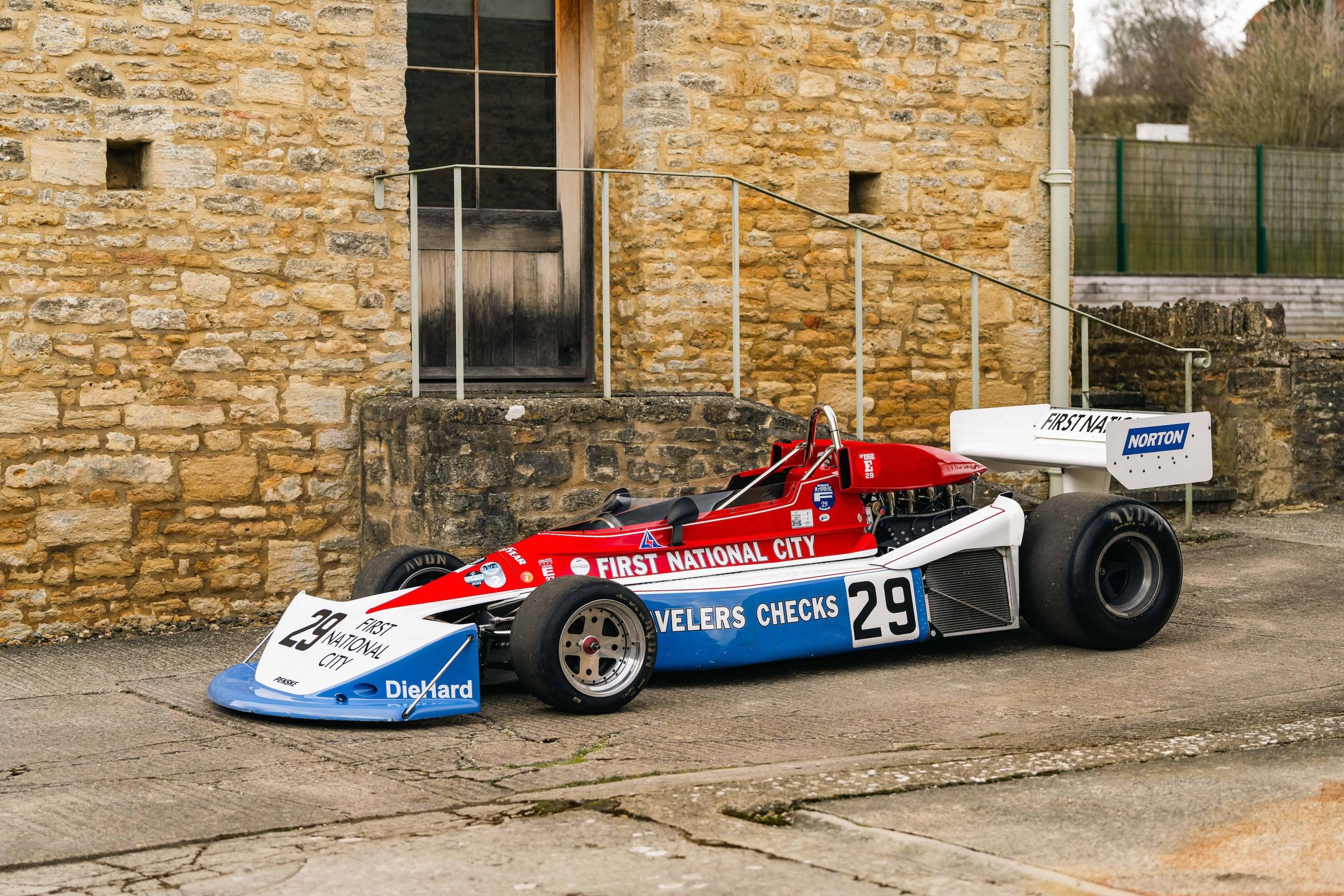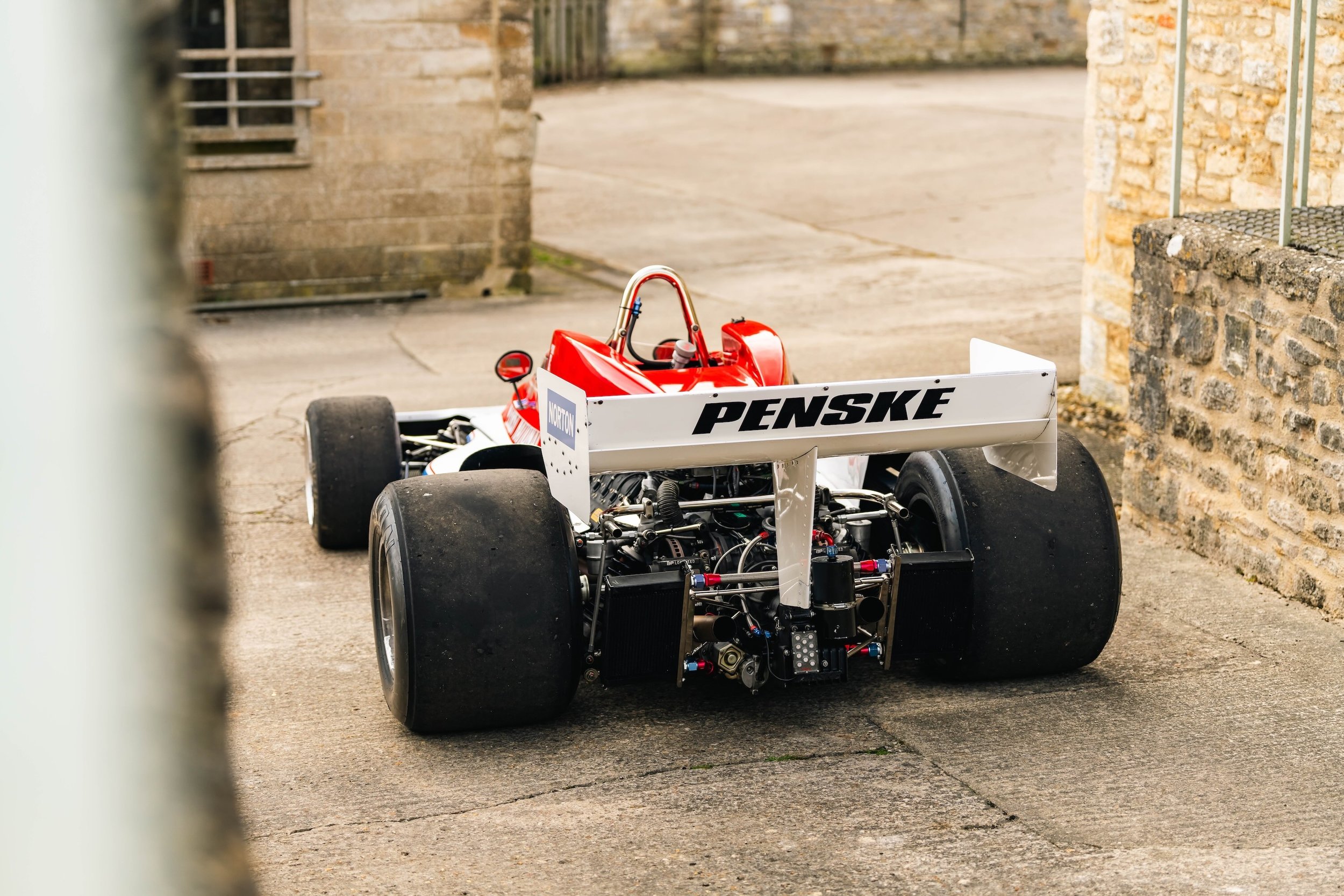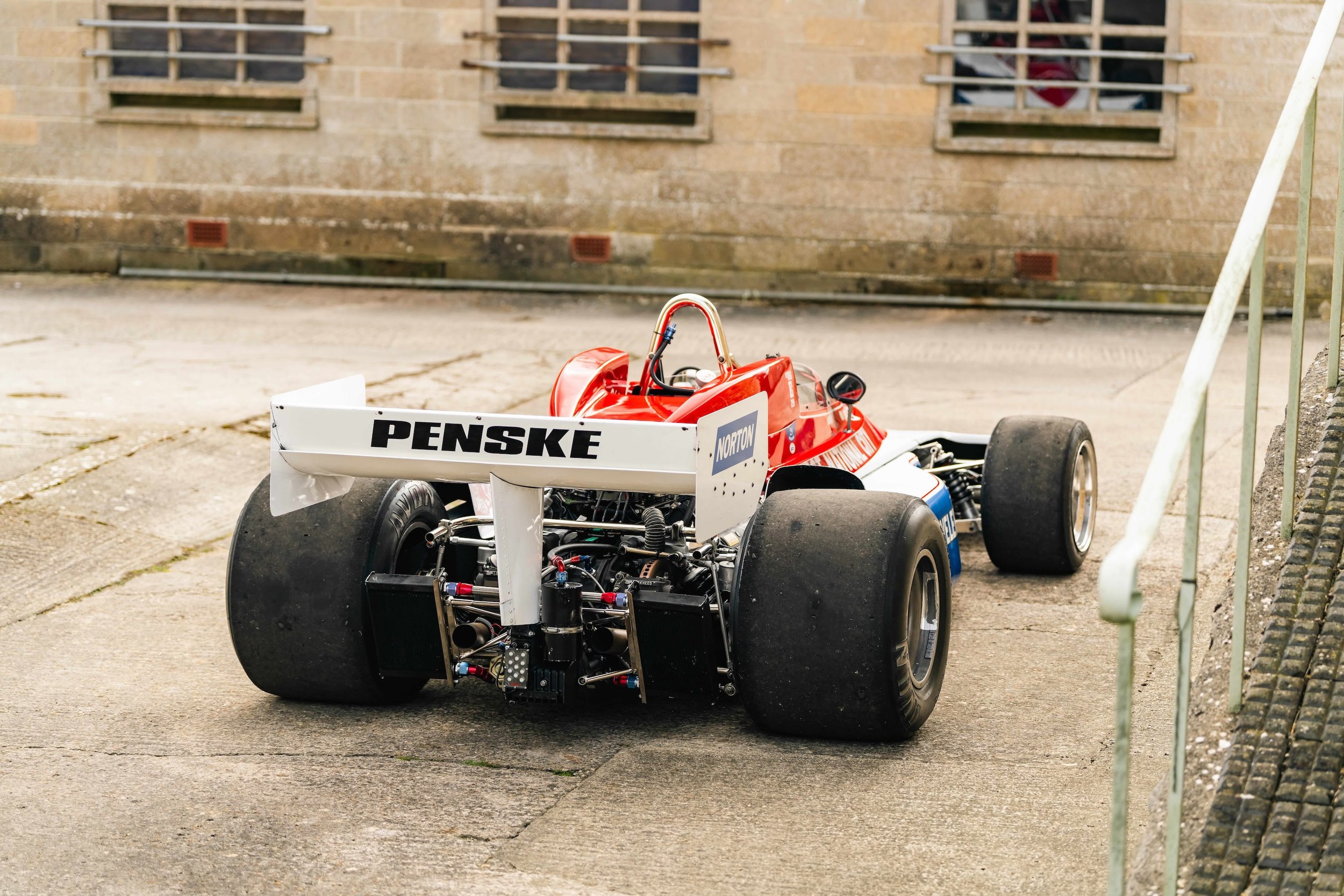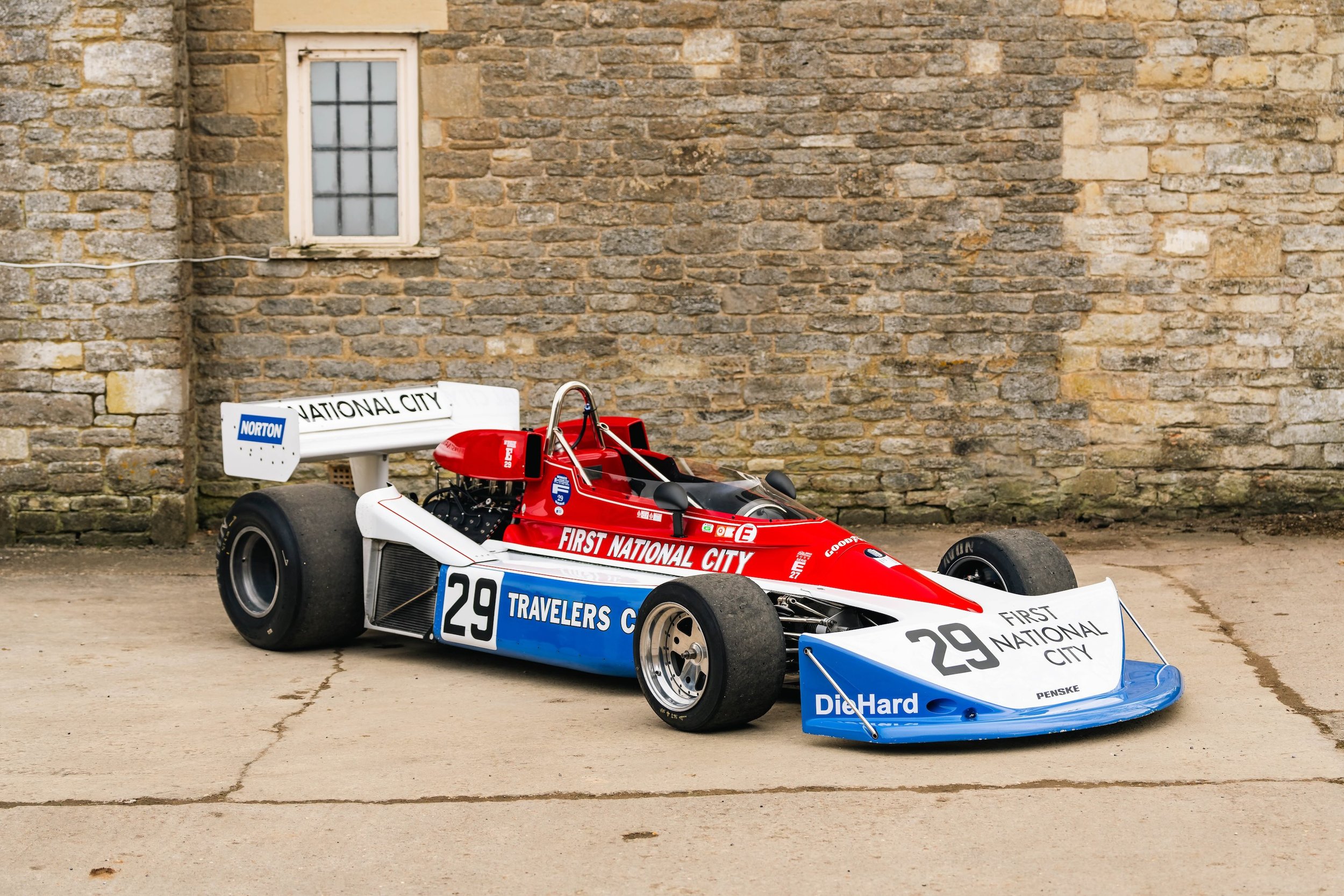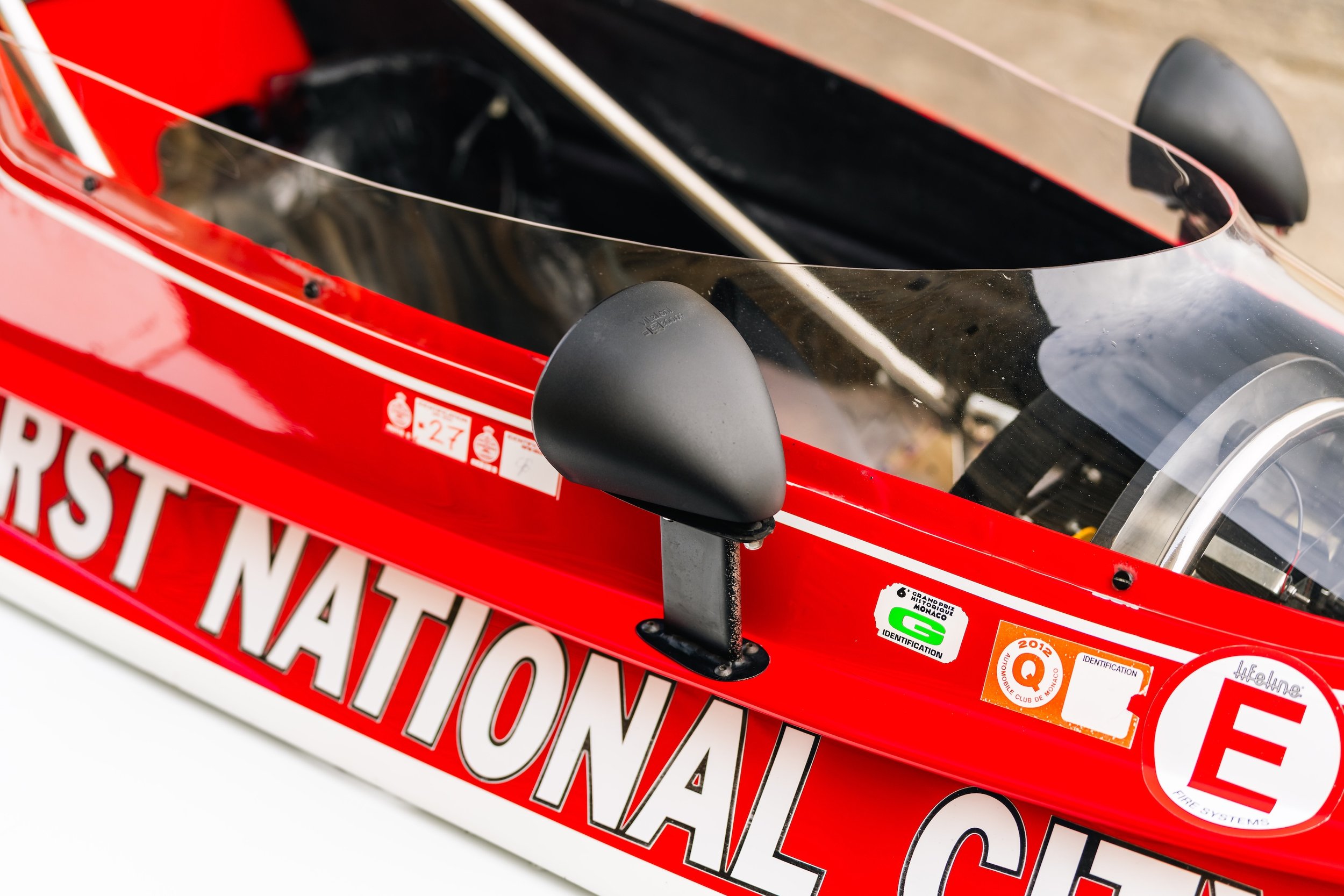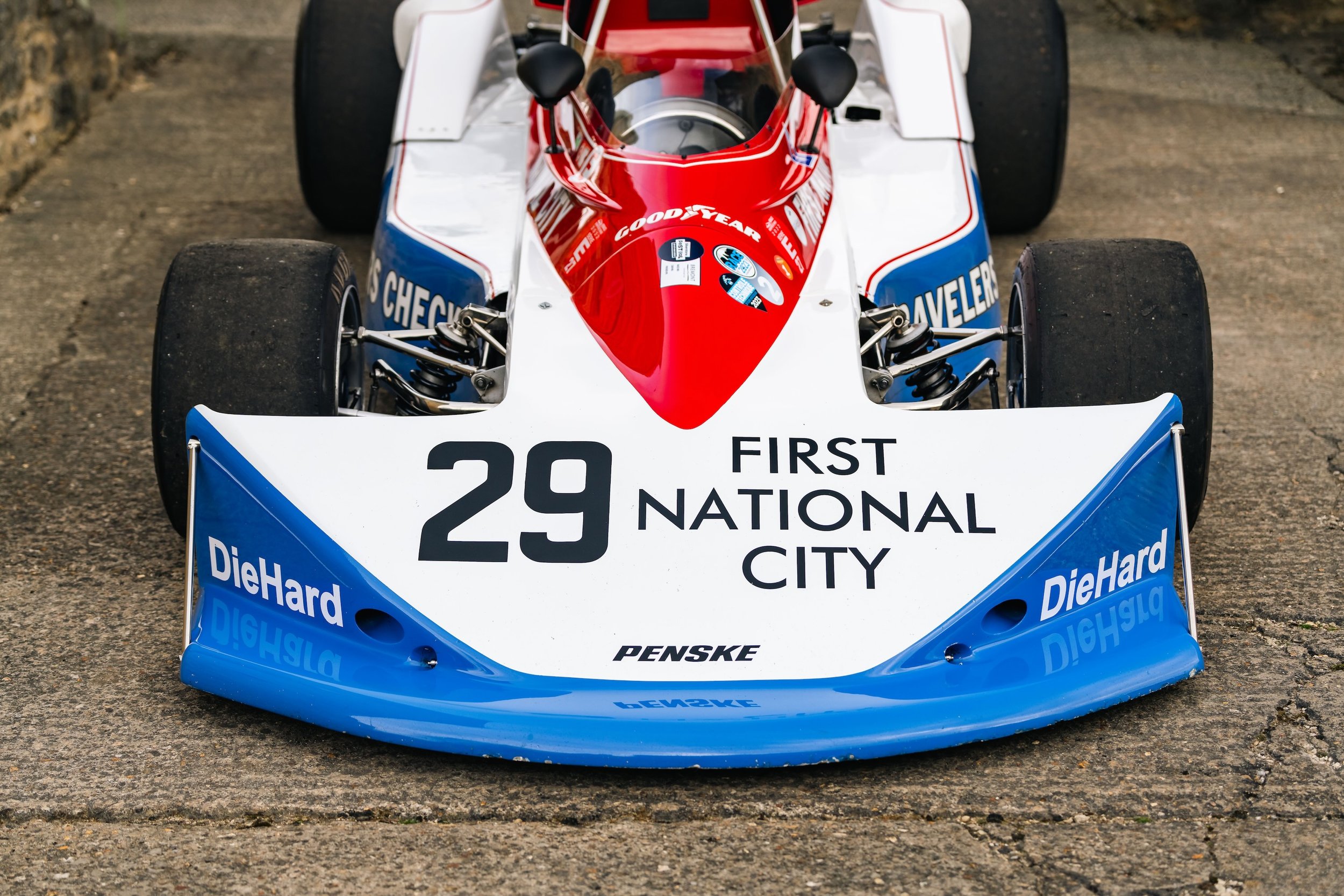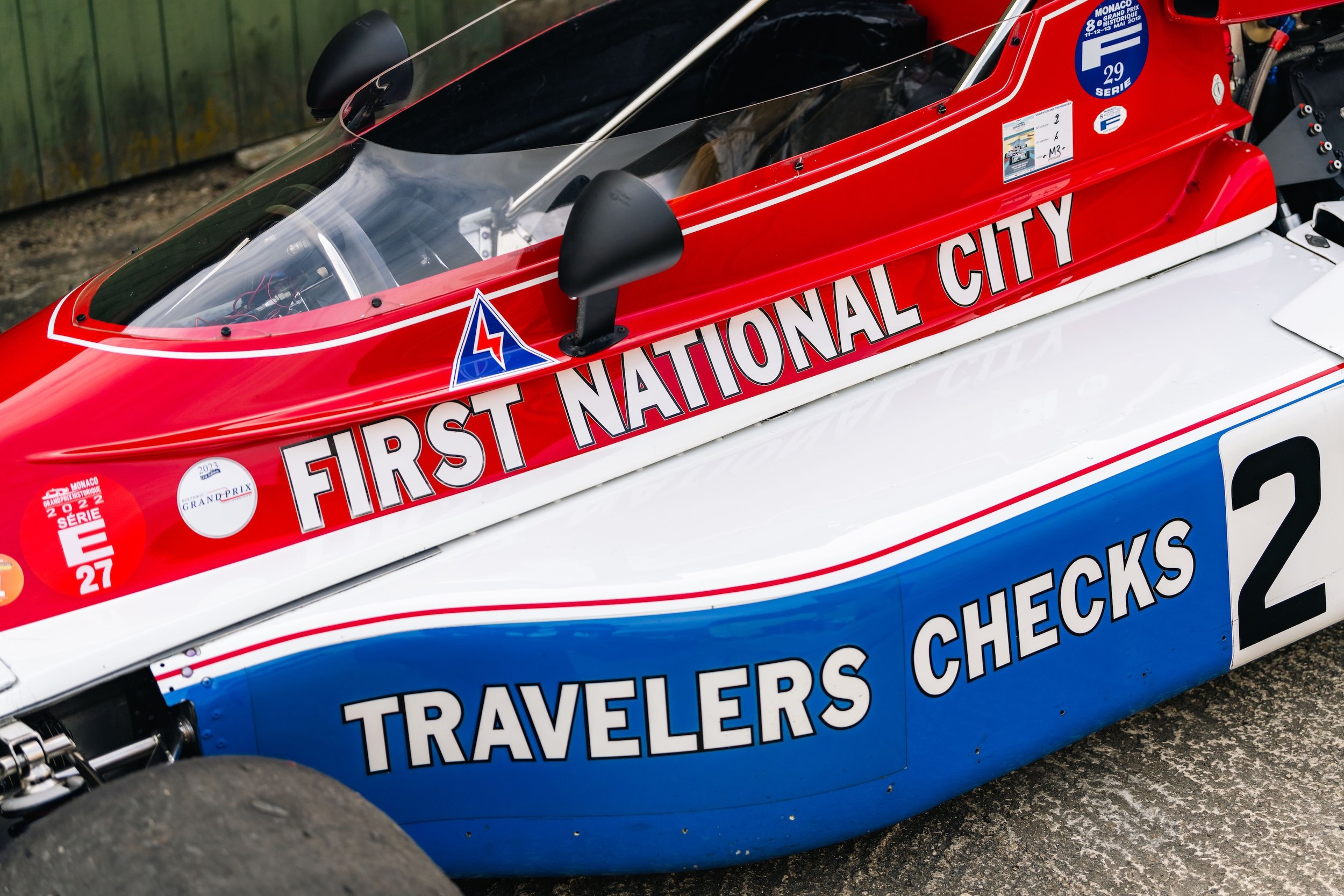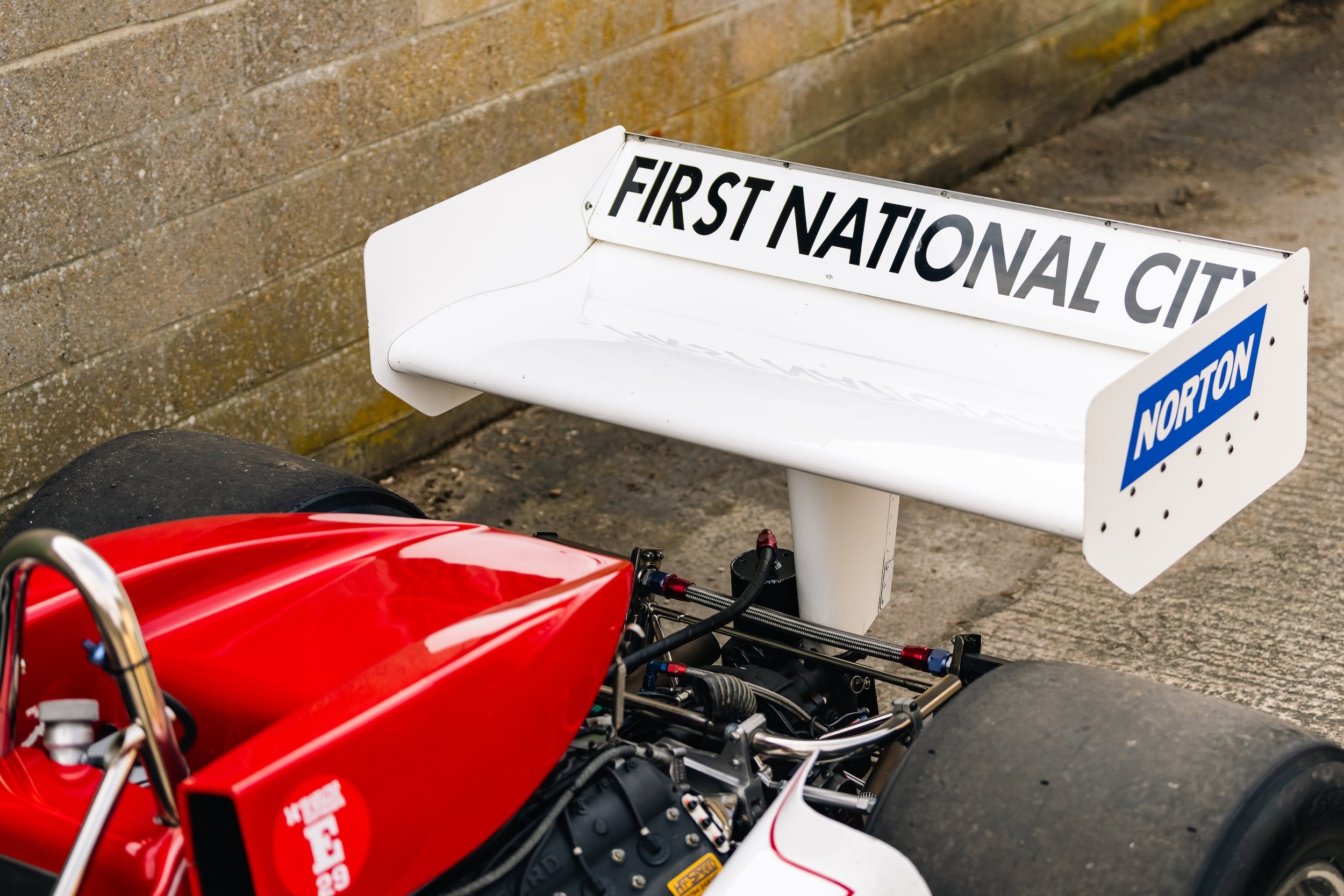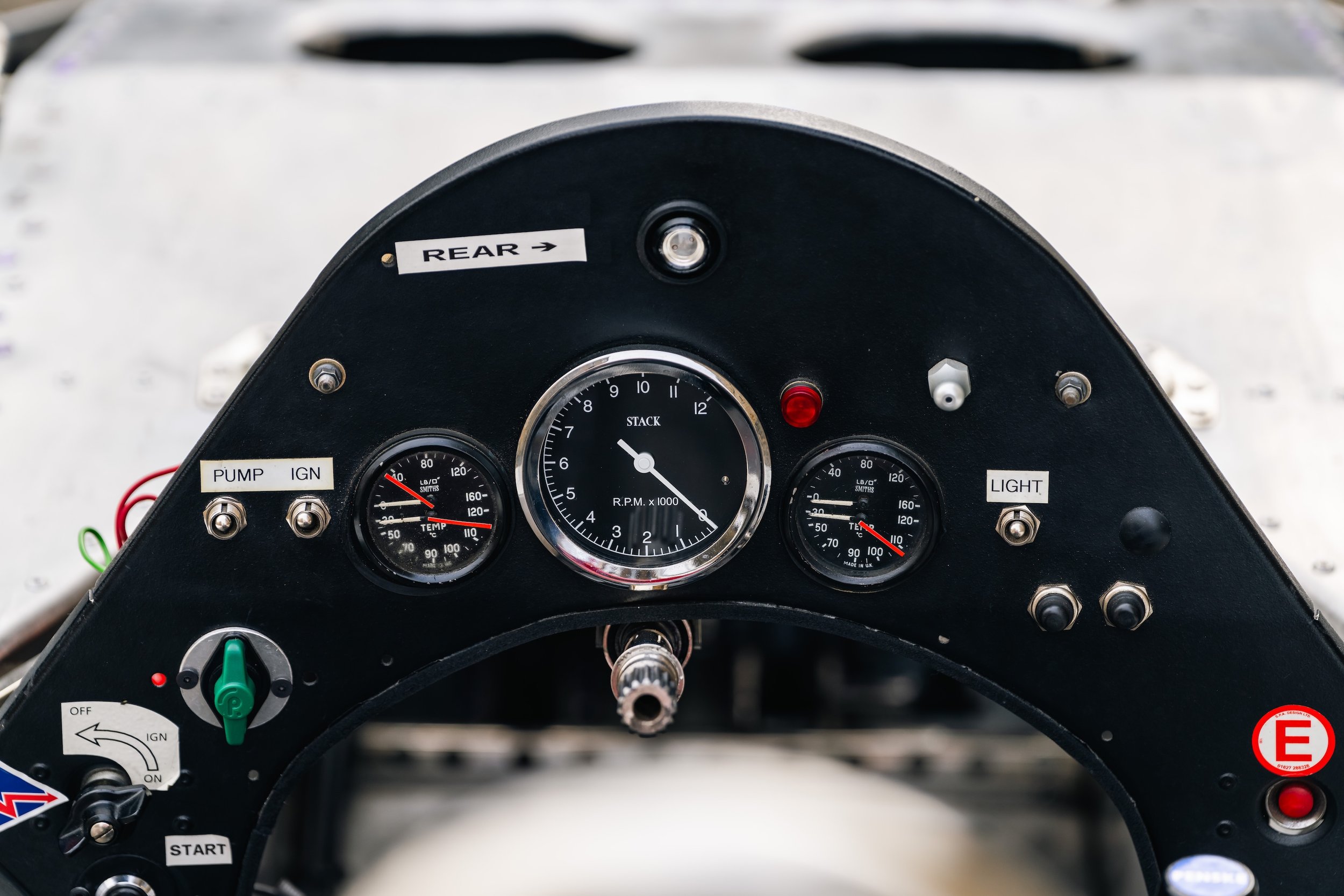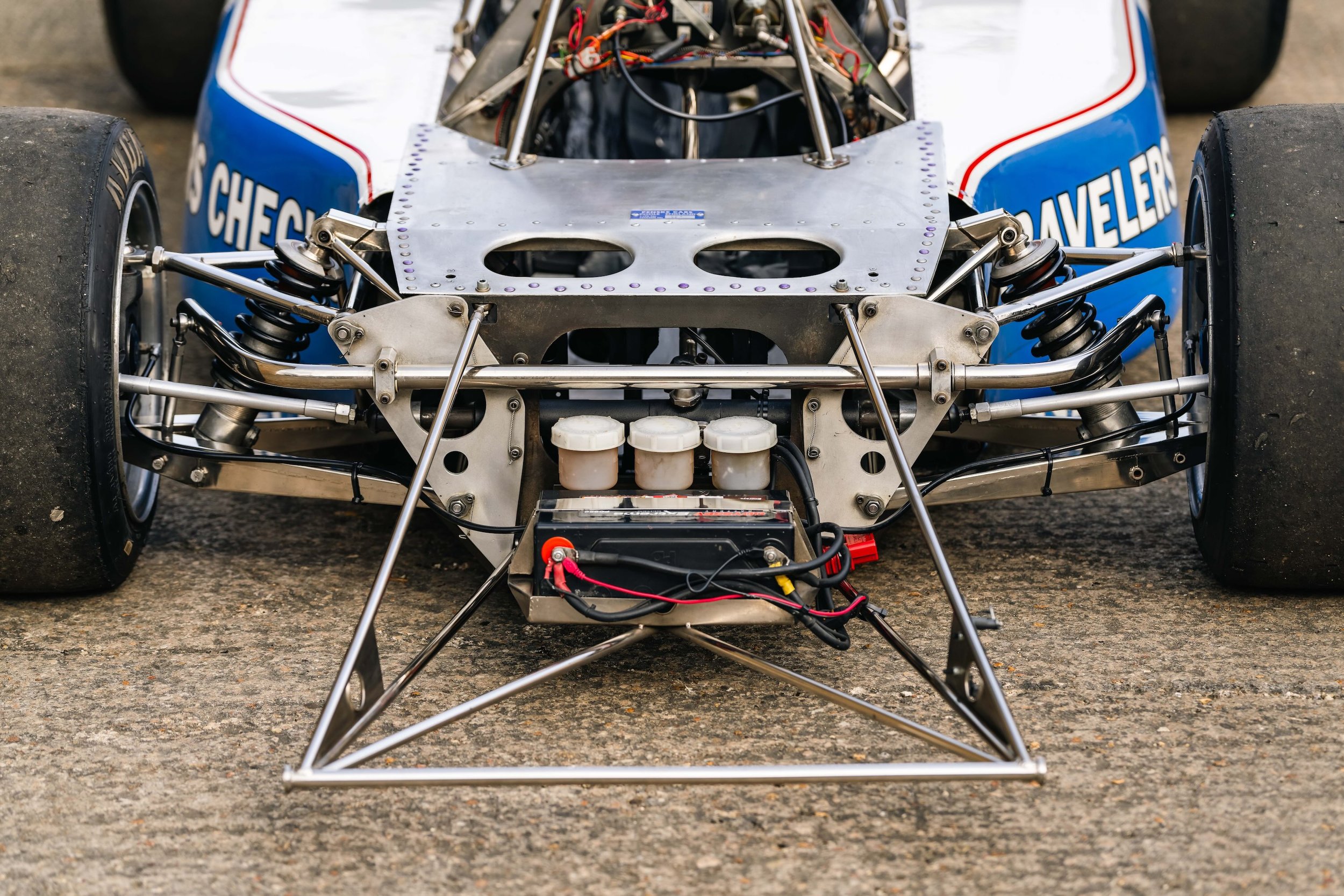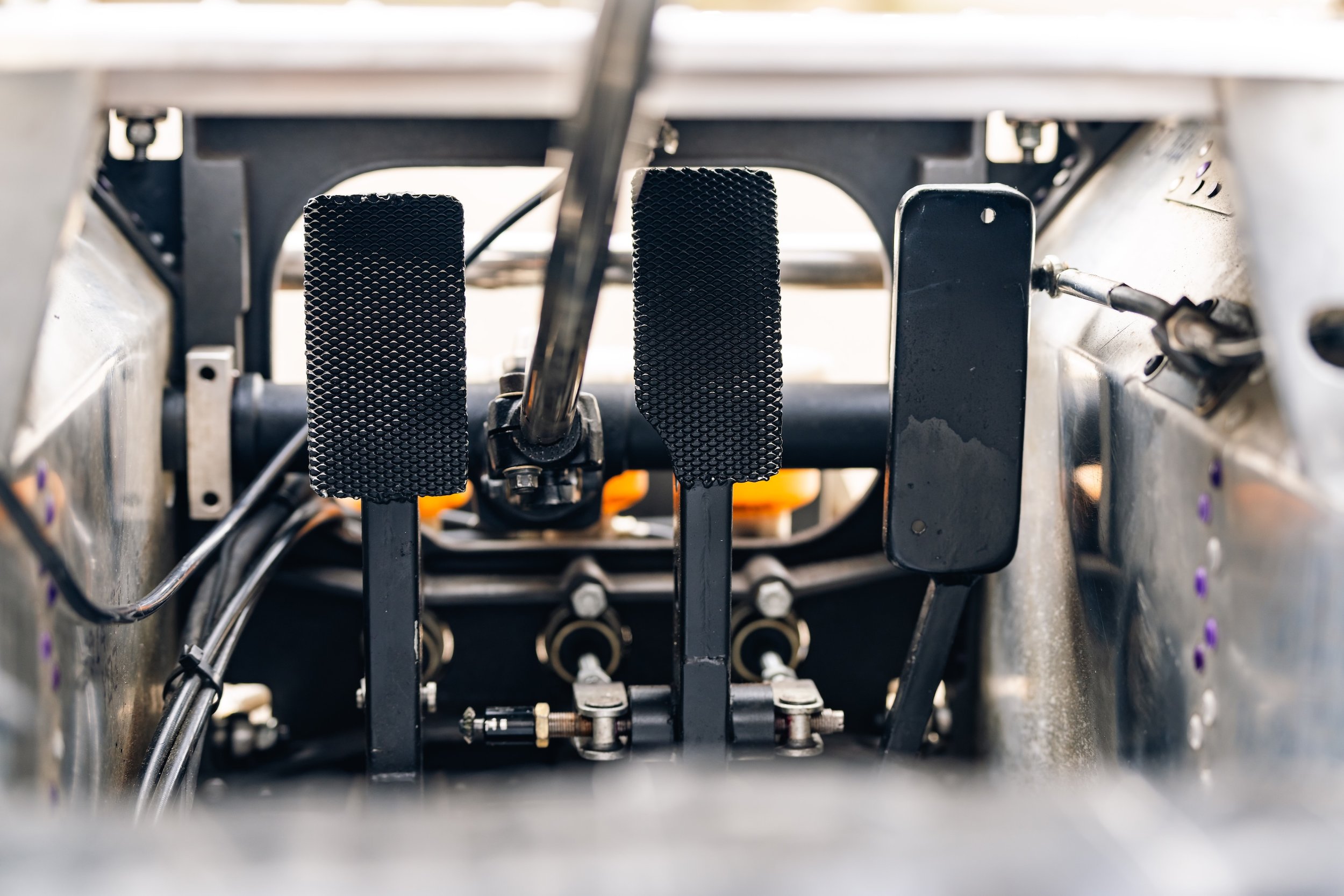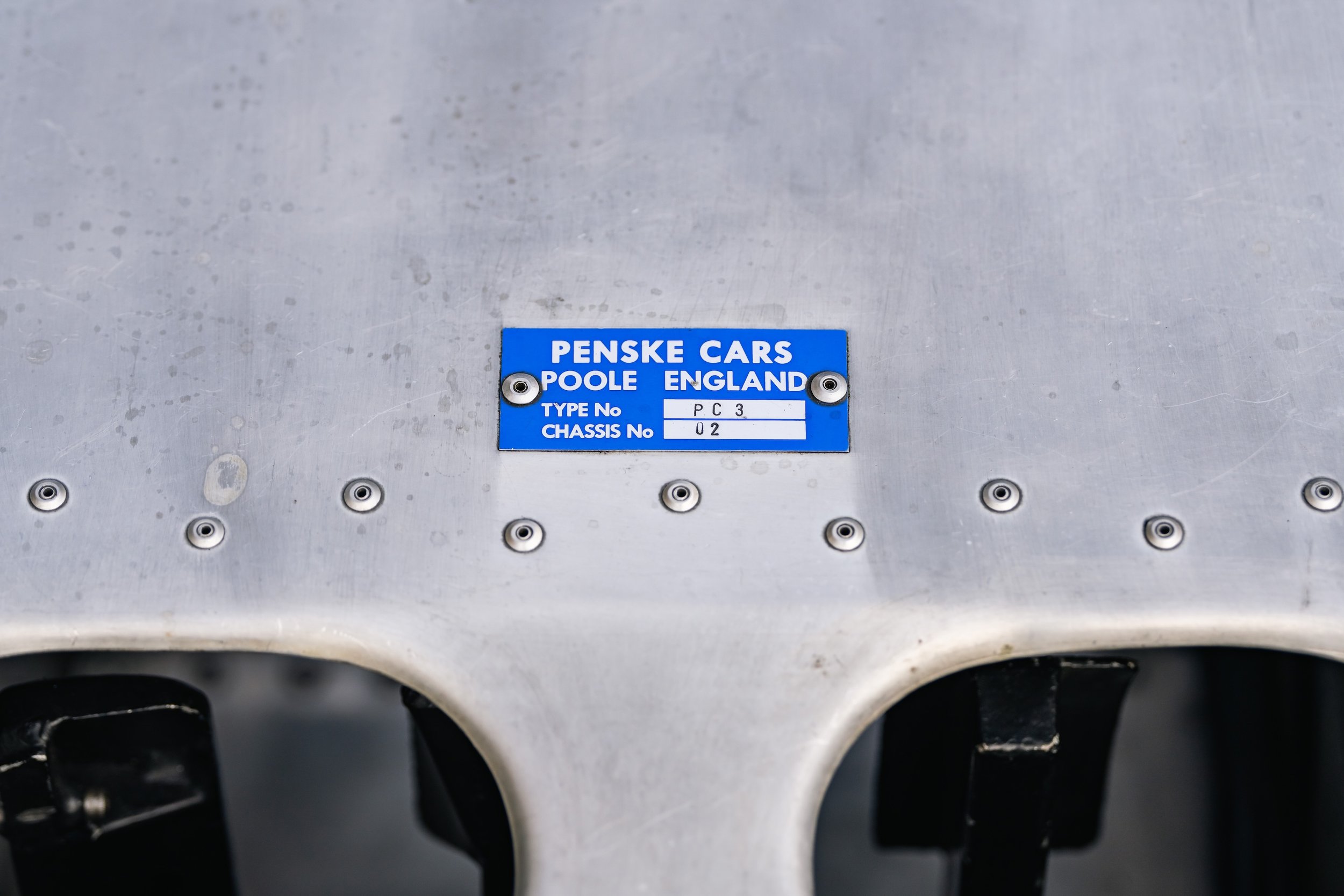The Ex - John Watson, Derek Bell
1976 Penske PC3 Formula 1
The second of just two PC3s constructed by Penske for the 1976 Formula 1 World Championship.
Driven by John Watson in the Brazilian and Spanish Grand Prix, along with the Race of Champions at Brands Hatch.
Sold to Paul Michaels’ Hexagon of Highgate team and rented to F&S Properties for Boy Hayje to race in the 1976 Dutch Grand Prix.
Subsequently raced by Derek Bell, Brian Henton and others in the ShellSport International Championship, Bell drove PC3/02 to victory at Oulton Park.
Having passed through the collection of Martin Birrane, PC3/02 was bought by Frank Sytner and restored by Simon Hadfield before becoming a regular competitor at the Monaco Historic Grand Prix. PC3/02 has achieved overall podiums in Masters Racing Legends and only has the Monaco Historic GP on the Cosworth DFV engine.
Regarded as one of the quickest pre ground-effect Formula 1 cars in historic racing, PC3/02 would be a front running contender for the 2026 edition of the Monaco Historic GP and is one of only a few F1 cars constructed by Penske.
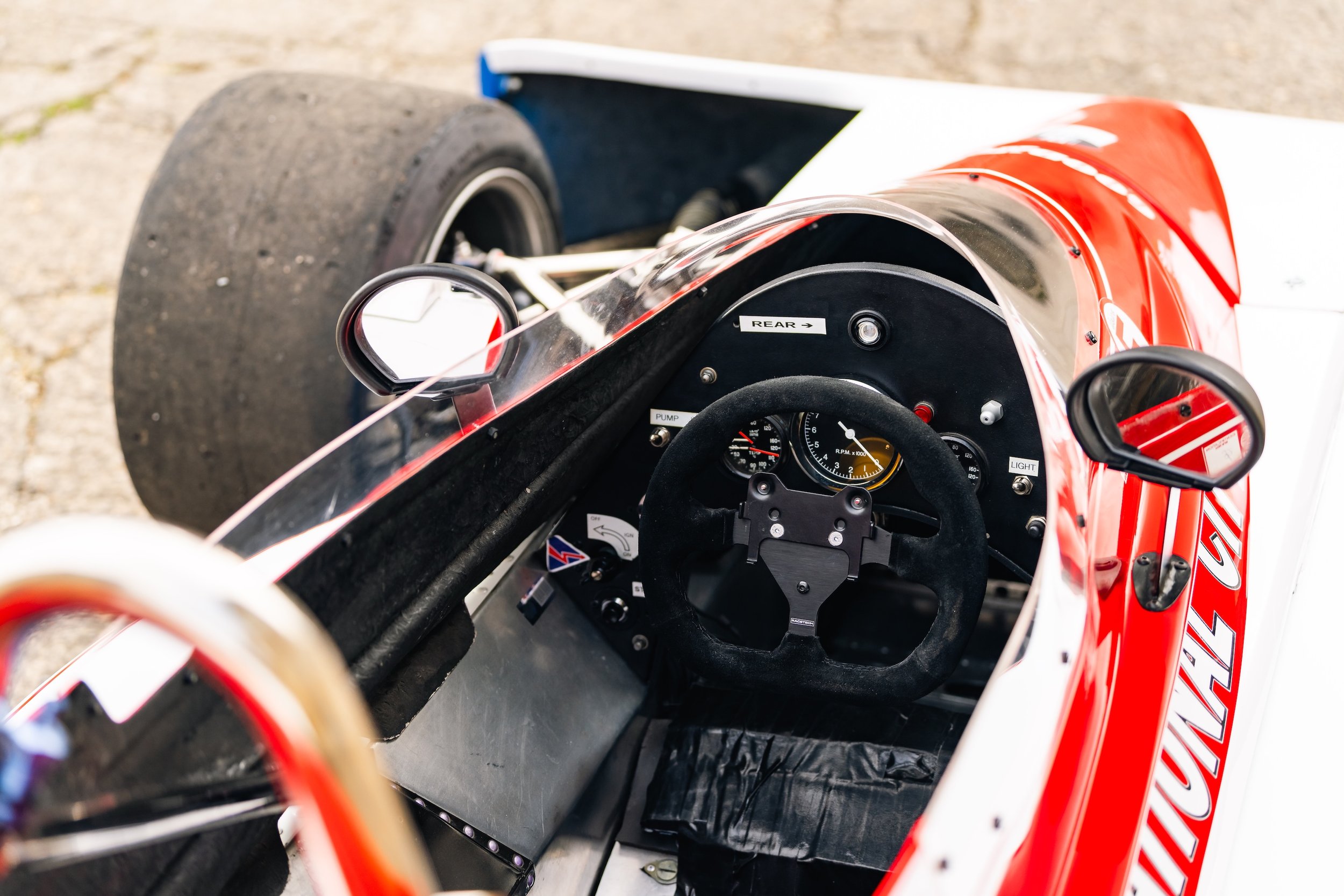
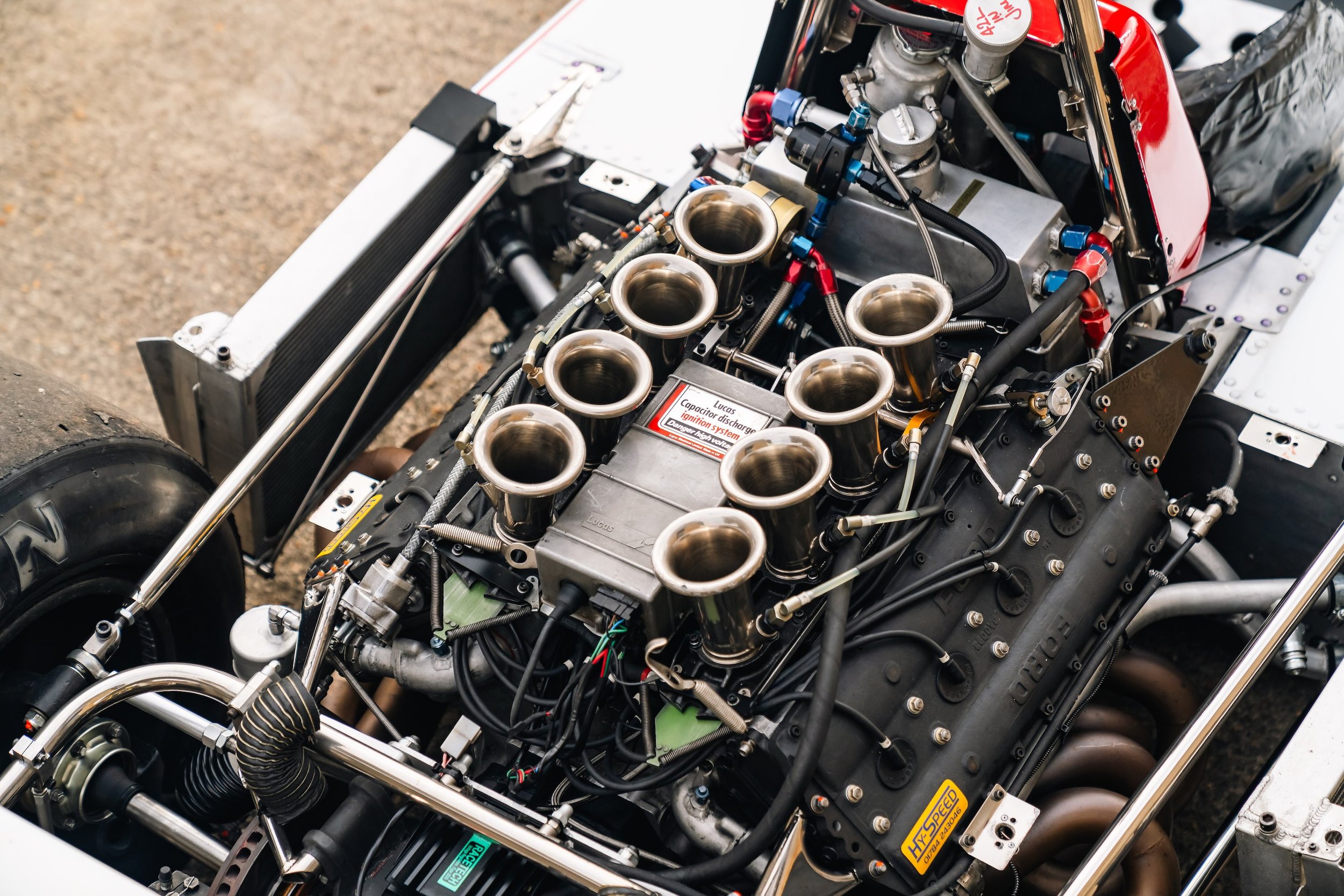
Price: £POA
Chassis Number: PC3/02
Roger Penske - Over 60 Years of Motorsport Success
Roger Penske’s legacy in motorsport spans six decades, from early success as a driver and subsequent titles across all forms of racing worldwide, Penske has had an unwavering commitment to the sport and has pioneered so much along the way.
Having already made a name for himself by the early ‘60s with a couple of Formula 1 outings, in 1962 Penske really came to the forefront of the US racing scene by his clever play of the rulebook to create the Zerex Special. While just about complying with the regulations to be an SCCA sportscar, it was in fact derived from a Cooper Formula 1 car and proved massively effective.
Penske won first time out in the Zerex Special at the LA Times Grand Prix and received plenty of critical attention from competitors, but the Zerex complied to the letter of the rules and incorporated a very small but legal passenger seat, offset to the left side due to the central driving position of the Cooper chassis.
While his car was the standard setter in terms of lap time, Penske also harnessed the power of sponsorship very early one. Zerex of course was a brand of DuPont, who no doubt were impressed of the performances and attention created by young Penske.
Penske nurtured his business empire, starting with a Chevrolet dealership, and became a giant in the US and around the world. His business success aided his competition endeavours which continue to this day. Penske has in fact won 44 titles in IndyCar, NASCAR, and the World Endurance Championship with the ultimate success of winning the Le Mans 24 Hours still eluding his outfits.
In the mid 1970s, Penske re-entered Formula 1 as an entrant for his star driver, Mark Donohue. Donohue had become Penske’s first team driver in 1966. The duo went on to form a formidable partnership, with the sight of their blue Sunoco liveried cars being synonymous with victory.
Penske’s first Formula 1 car was conceived after taking over the former McRae Cars Ltd facilities in Poole, UK, and appointing several of his existing personnel to run the operation with design handled by Geoff Ferris.
The PC1 debuted in late 1974 and followed the norm of Formula 1 at the time with an aluminium monocoque, Cosworth DFV engine and Hewland FG400 gearbox. Penske had brought the backing of the First National City, and as such the Penske F1 cars would be painted in their red, white and blue colours.
Despite having actually retired from racing in 1973, Donohue made a return to drive for Penske in the Formula 1 World Championship. After having completed the Canadian and United States Grand Prix at the end of 1974, Team Penske prepared for a full assault on the 1975 F1 World Championship.
With the PC1 taking 5th in Sweden, it showed promise but was rested in favour for a March 751. Ultimately, it would be complications from an accident in the 751 that lead to Donohue’s death, which undoubtedly hit Penske and the team hard.
Promising young Irishman John Watson stepped into Donohue’s void and debuted the new PC3 in practice at the final race of 1975, the US Grand Prix. Watson’s performance there secured the full time seat for 1976 and the PC3 would be his car.
The new PC3 incorporated various details from the PC1 and numerous similarities to the March 751, refined together to create a very neat and well engineered package. The Cosworth DFV V8 engine was connected to a Hewland FG400 and braking was handled by closed back four pot AP Lockheed callipers and vented discs all round. With a nose section reminiscent of that made by March, the main cockpit bodywork rose higher and closer to the driver than March’s and a deep centrally mounted rear wing bought downforce at the rear.
This car, PC3-02
Just two PC3s were built by Penske and PC3-02, this car, was completed in time for the first Grand Prix of 1976. The season opening race was held at Interlagos in Brazil, and the well funded Team Penske were one of only three teams to have spare cars at the fly away race. Watson used PC3-02, setting 8th fastest time in qualifying and showing strong promise for the new PC3.
The early promise of qualifying was not converted into a result however as a fuel line came loose on the second lap of the Grand Prix. As Watson pulled PC3-02 up, a fire broke out on the exhausts but was quickly extinguished by an alert marshall.
Watson would then switch between the two PC3s, with both cars typically in service during a GP weekend. PC3-02 was practiced in South Africa and then raced again at the Brands Hatch Race of Champions in May. Watson again set 8th fastest time in qualifying at Brands Hatch, and in the race climbed to 5th on the tail of the leading group until he made a mistake. Watson clipped the grass around the back of the circuit and spun out into the catch fencing, forcing retirement.
PC3/02 was used in practice at Long Beach for the US GP and pressed back into racing service for the Spanish Grand Prix at Jarama in May. Watson set 14th quickest time in qualifying and in the race, he rose to 9th before his DFV blew up, signalling the end of their campaign.
At Zolder for the Belgian Grand Prix, PC3/02 was used in practice while at Monaco it was present as spare but unused by Watson. At Anderstorp, Sweden, PC3/02 was practiced once more and then the spare car for Watson at the French and British Grand Prix as the new PC4 came into service.
Penske sold both PC3s to Paul Michaels’ Hexagon of Highgate concern in late July 1976. Hexagon had been looking for an F1 car that would be competitive to run in the British based ShellSport International series and the PC3 was that car. PC3/01 was immediately sold on to Danish racer Jac Nellemann and PC3/02 was to be Hexagon’s challenger.
Before racing for Hexagon directly, PC3/02 was rented to F&S Properties for Dutch driver Boy Hayje to contest the 1976 Dutch Grand Prix in Zandvoort. Hexagon’s mechanics accompanied the car for the GP weekend, with Hayje making his F1 debut. Setting respectable times, setting 21th fastest lap of 26 competitors.
In the Grand Prix, Hayje fought well on the tail of Jarier while keeping the likes of Pescarolo, Merzario, Ertl and Stommelen behind. A pit stop to change a tyre delayed his progress and ultimately a broken drive shaft forced retirement.
The very next day, a bank holiday Monday, PC3/02 was at Brands Hatch for the ShellSport International round was being contested, and Damien Magee was Hexagon’s driver. Still sporting the same colours as run by Hayje, with F&S Properties’ branding covered by a Hexagon logo, PC3/02 was up against a mix of F1, F2 and F5000 contenders.
Having practiced the team’s March 75A F5000 while PC3/02 was racing at Zandvoort, Magee set 27th fastest time in his first run with the Penske on the Monday morning. In the race however, Magee stormed through the field to take a fine 4th place finish.
Magee again drove PC3/02 at Thruxton where he finished 2nd, and at Oulton Park which finished with a DNF when Magee went off. For the final two races of 1976, Hexagon brought in Derek Bell to pilot PC3/02. Bell, who had won the Le Mans 24 Hours in ’75, put the Penske on the front row of the grid at Brands Hatch.
Bell led away and was in commanding form during the race, only to be slowed when his gear linkage broke with five laps to go. Despite this, Bell brought PC3/02 home in 4th place for Hexagon. The final ShellSport race of 1976 was held on the short Brands Hatch Indy circuit in wet conditions. Having set 3rd fastest time in qualifying, Bell went on to fight for the lead with series leader David Purley. Bell lead for three laps but got stuck behind back-markers and had to settle for 2nd.
The 1977 season started for PC3/02 at the Race of Champions. Swan Lager had come onboard as sponsor for the season and the Penske was painted gold, white and orange. Hexagon put Bob Evans in the car at Brands Hatch, with Evans having shown strong results in his occasional F5000 and F1 outings. Evans set 11th fastest time in qualifying and finished in the same position at the conclusion of the race.
PC3/02 was rented out to Nick May to drive at the Snetterton ShellSport round but a practice crash ruled out his chances. Derek Bell returned to the wheel of PC3/02 for the majority of the season, taking victory at Oulton Park in April. A pair of 4ths followed but the team’s chances were hit by a series of DNFs and the F1 effort from Hexagon was loosing momentum.
For the final round of the 1977 ShellSport series, Hexagon brought Brian Henton in to drive PC3/02. Henton, would become a star of F2, and quickly got on the pace in the Penske to qualify 4th at Brands Hatch. In the race, PC3/02’s final contemporary outing, Henton drove with his usual pace to score 3rd place for the team.
Life after Hexagon
Hexagon ceased their racing activities after the 1977 season and PC3/02 was retired to their workshop. As Historic Formula 1 racing became prominent in the early 1980s, and with Allan Baillie going well in the sister PC3, PC3/02 was bought from Hexagon by Brian Tyler. John Harper then bought the car and sold it on to Paul Gardner who took it racing once more.
Martin Birrane was the next owner, having acquired PC3/02 from Gardner by 1996, and with him it resided in Dublin until Frank Sytner bought it in 2004. Collected and subsequently restored by Simon Hadfield, both Sytner and Hadfield enjoyed success with the car in Historic F1 and at the Monaco Historic Grand Prix.
Sytner sold PC3/02 to Paul Knapfield in 2008 and Knapfield would go on to campaign the Penske in historic racing, also taking it to the Monaco Historic GP where it raced in Serie E. Knapfield also bought PC3/01 and both cars remained in his collection until bought by the current owner in 2021. PC3/02 has continued to be campaigned by the current owner and shown impressive speed throughout.
Having raced PC3/02 successfully at the 2022 Monaco Historic, it underwent further preparation in anticipation of the 2024 edition. The mandated crack testing was carried out in February 2024 and a new build short-stroke Cosworth DFV engine by HySpeed was fitted. Dyno tested at 495 bhp at 9800 rpm, the new DFV has only completed pre-Monaco testing and the Monaco race to date, where it finished in 5th place.
With the Advanced Fuel Systems fuel cells valid to October 2026 and FIA HTPs valid to December 2032, PC3/02 remains not only low mileage since its last rebuild, but in compliance with the regulation requirements to compete in Historic Formula 1 races.
As Monaco 2026 appears on the horizon, the 1976 Penske PC3 stands as one of the most handleable cars to tackle for the 1973-1976 Serie E, aided in the selection process by virtue of being one of only two PC3s built.
Despite being a non-ground effect car, PC3/02 has shown also its ability in Masters Racing Legends with qualifying 2nd overall at Spa in 2023, and scoring 2nd and 4th place finishes at Zandvoort in the same year, importantly recording a faster lap time than race winner Michael Lyons’ Lotus 92.
PC3/02 is extremely well regarded by all who have been involved with it in recent years and is one of the most interesting yet practical F1 cars of its era, bolstered by its accessible performance and good looks. PC3/02 also benefits from a clear and continuous history, well known to the historians of historic motorsport, and remains a genuine car.
Available now, why not get to grips with PC3/02 during the 2025 season in preparation for taking on the streets of Monaco in May 2026?
Get in touch to find out more
Please feel free to get in touch and I’ll be happy to discuss the car with you.
Either fill in the form to the right or call on 0044 (0) 7535 148 470.





